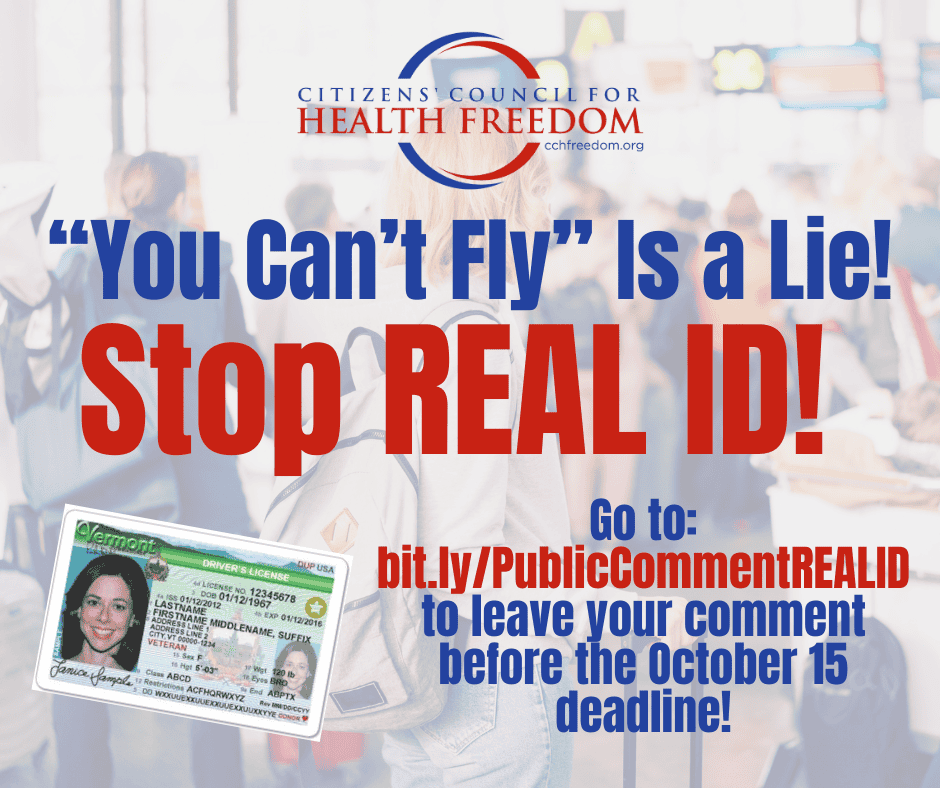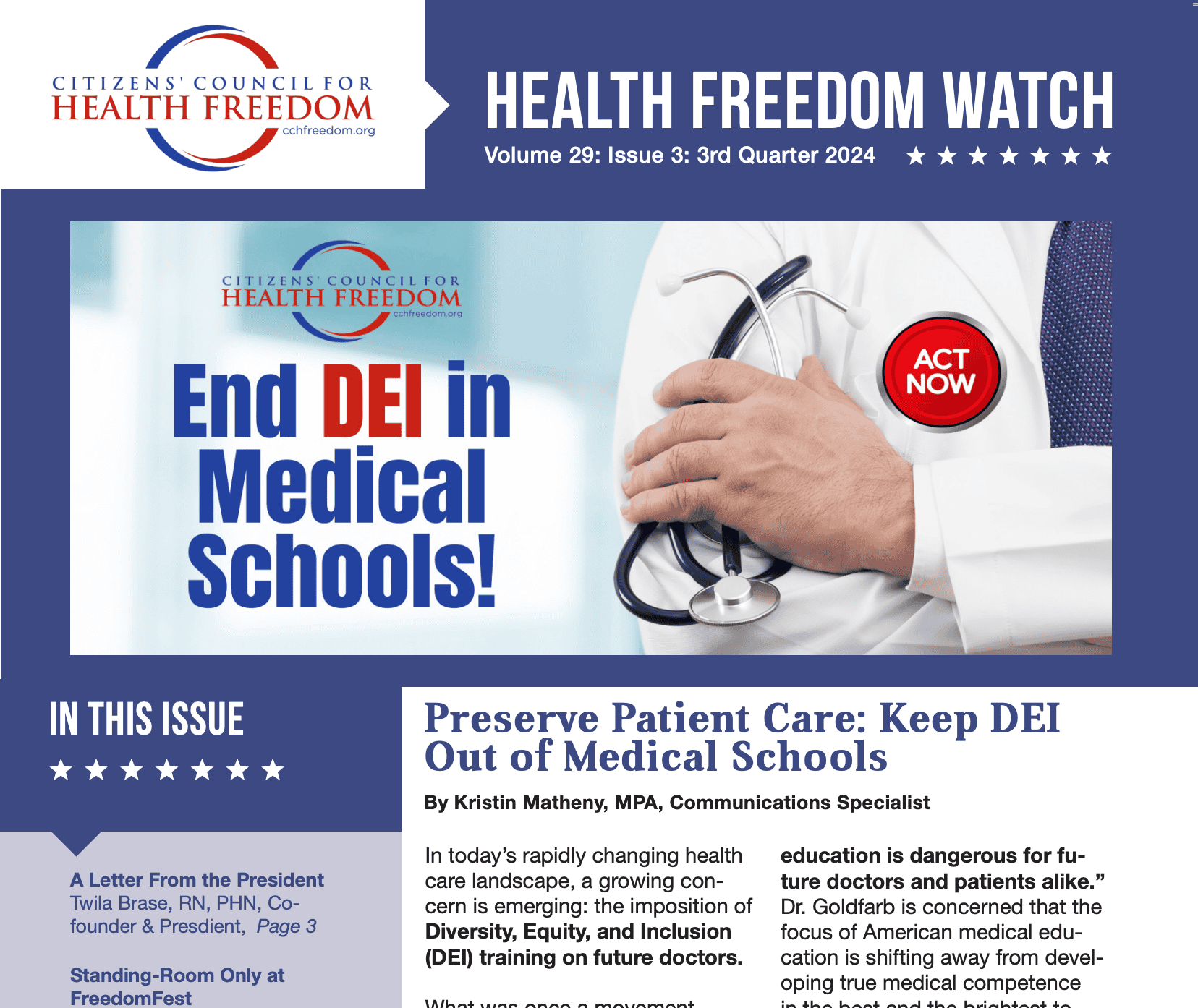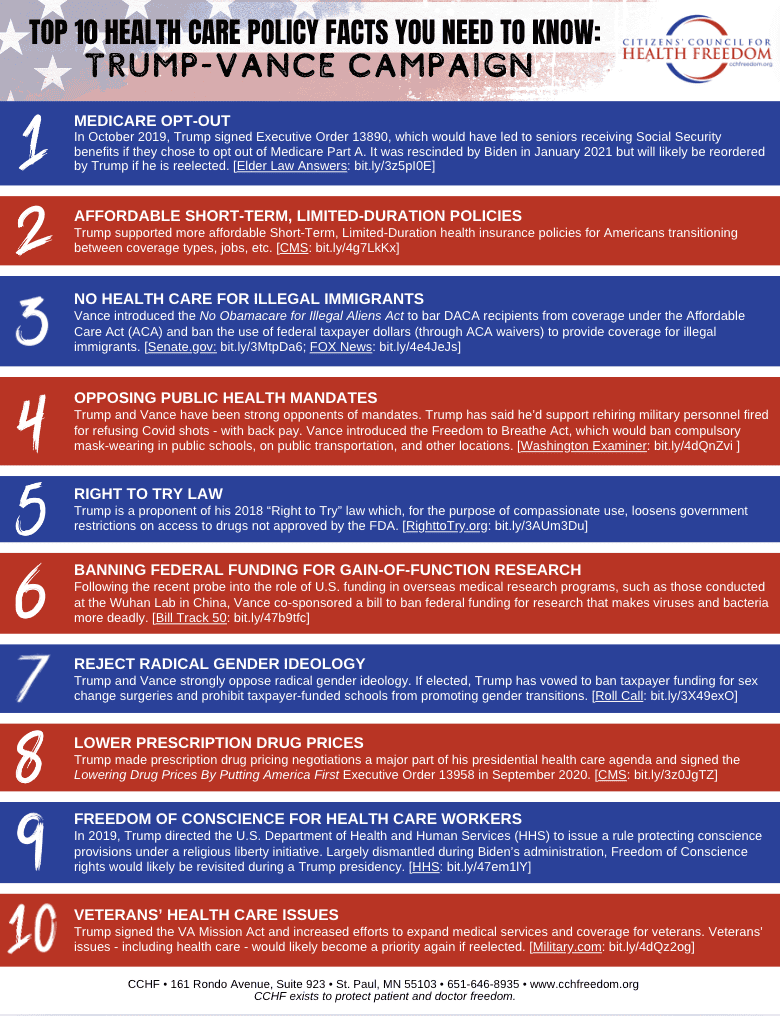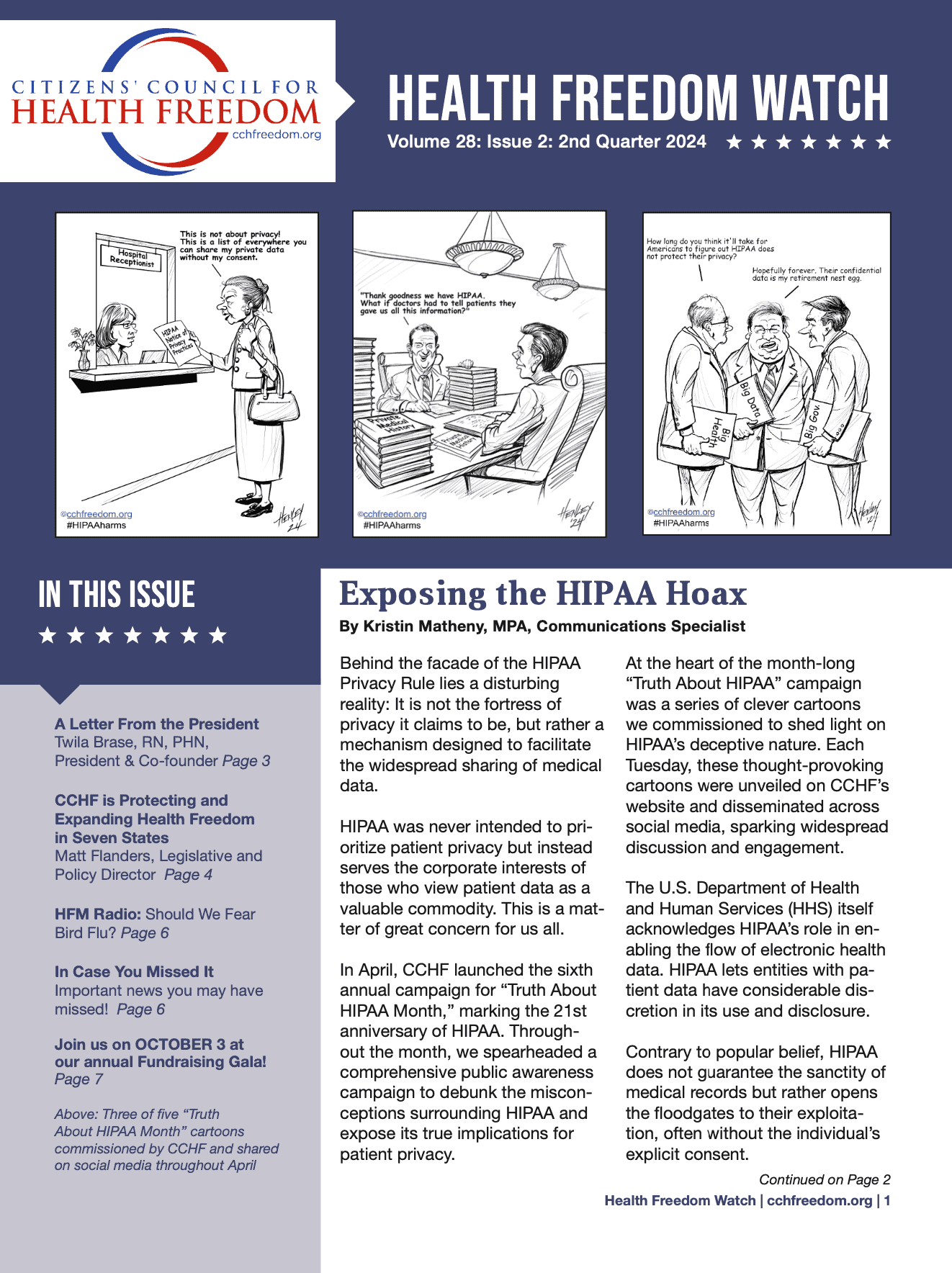Patient Privacy and Public Trust:
How Health Surveillance Systems are Undermining Both
CCHF has released a new 50-state CCHF Policy Insights Report on State Health Surveillance Systems. Although the report reveals a long list of government patient-tracking systems, it focuses on four systems found in all, or almost all, 50 states and the District of Columbia. Included with the report are a variety of companion charts, as described below.
MAP:
To find the tables of data for a particular state, a clickable map of the United States can be found below.
TABLES OF LAWS AND RULES:
The map below contains links to 51 pages – one for each state and Washington, D.C. Each state page includes charts with language from applicable laws and regulations for the four surveillance systems for that state. Occasionally, the tables include other information of interest found online during our search for the statutes. Readers will find the actual citation of the statutes and rules, a portion of the statutory language specific to certain aspects of each surveillance system, and the status of consent requirements, if any. Statutes and regulations were last accessed and updated in August 2012.
“RAW DATA” SPREADSHEET:
We have published a companion 50-state spreadsheet that includes the original raw data (black text) gathered from or sent to CCHF by state health departments at our request in 2005 and 2006 — before we modified the data collection process to focus on state statutes and regulations. Since various state health departments refused to provide information as requested, it is not complete. However, this spreadsheet also contains raw data found online in 2007 and 2008 (blue text) as we attempted to fill in the gaps.
In 2008, we modified our data collection process to accomplish our 50-state objective. The result of that data collection of statutes and regulations is discussed above. While the data we collected in the spreadsheet from 2005 – 2008 was the best information we could find at the time, some is out of data (e.g. individuals in databases) and the rest will need verification.
To our knowledge, however, this is the first attempt to collect this kind of surveillance data nationwide and the most extensive collection of it in the public purview. As such, the data in this spreadsheet provides a superb baseline for comparision and extrapolation — particularly regarding the number of individuals tracked in the surveillance system then and how many individuals may be tracked today.
OPPORTUNITY FOR ACTION:
Together, these tables of data and our analysis will provide state legislators, policy organizations, and members of the public with an excellent resource for discovering these and other hidden government health surveillance systems in their own state. This information also provides individuals in the system, Congress which funds these systems, and state legislators who have the power to undo these systems with an opportunity to take action to restore individual privacy rights, to require written consent (opt-in), and to force state agencies to destroy personal data that has been collected, stored, used and shared without the individual’s consent.
- Alabama
- Alaska
- Arizona
- Arkansas
- California
- Colorado
- Connecticut
- Delaware
- Florida
- Georgia
- Hawaii
- Idaho
- Illinois
- Indiana
- Iowa
- Kansas
- Kentucky
- Louisiana
- Maine
- Maryland
- Massachusetts
- Michigan
- Minnesota
- Mississippi
- Missouri
- Montana
- Nebraska
- Nevada
- New Hampshire
- New Jersey
- New Mexico
- New York
- North Carolina
- North Dakota
- Ohio
- Oklahoma
- Oregon
- Pennsylvania
- Rhode Island
- South Carolina
- South Dakota
- Tennessee
- Texas
- Utah
- Vermont
- Virginia
- Washington
- Washington DC
- West Virginia
- Wisconsin
- Wyoming
- THE REPORT – “Patient Privacy and Public Trust: How Health Surveillance Systems Are Undermining Both”
- Executive Summary
- Raw Data – to print this document requires a color printer and legal-size paper.
- 50-State Database Charts:










Make an Educated Choice